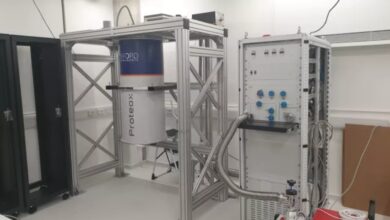NASA’s Webb Telescope Confirms Controversial Planet Formation Theories

In a groundbreaking development, NASA’s James Webb Space Telescope (JWST) has provided compelling evidence that supports long-debated theories regarding the formation of planets. Recent observations have confirmed key processes that were previously considered controversial, shedding new light on how planets develop in the cosmos.
Observation of Water Vapor: The JWST has successfully detected water vapor in protoplanetary disks, which are the regions around young stars where planets are born. This discovery confirms the theory that ice-coated solids drift from the outer regions of these disks, playing a crucial role in planet formation.
Extended Lifespan of Planet-Forming Disks: New data indicates that planet-forming disks in the early universe lasted longer than previously thought. This finding suggests that the conditions for planet formation were more favorable over extended periods, allowing for the development of more complex planetary systems.
Refutation of Previous Theories: The latest images and data from the JWST have challenged existing theories about the early stages of planet formation. The telescope’s observations provide evidence that contradicts earlier models, which posited that these disks dissipated too quickly for significant planet formation to occur.
Visual Evidence: The stunning images captured by the JWST reveal intricate structures within these disks, including arcs of orange and pink that suggest dynamic processes at play. These visuals not only enhance our understanding of planet formation but also highlight the capabilities of the JWST in exploring the universe.
Enhanced Understanding of Planetary Systems: By confirming the processes involved in planet formation, astronomers can refine their models and predictions about how different types of planets, including those similar to Earth, may form.
Broader Cosmic Context: These discoveries provide insights into the conditions of the early universe, helping scientists understand the evolution of galaxies and the potential for life beyond our solar system.
Future Research Directions: The JWST’s capabilities will continue to drive research in planetary science, with astronomers eager to explore more protoplanetary disks and gather additional data that could further illuminate the complexities of planet formation.
As the JWST continues its mission, the astronomical community eagerly anticipates more revelations that could reshape our understanding of the universe and our place within it. The confirmation of these controversial theories marks a significant milestone in the quest to unravel the mysteries of how planets are born.




